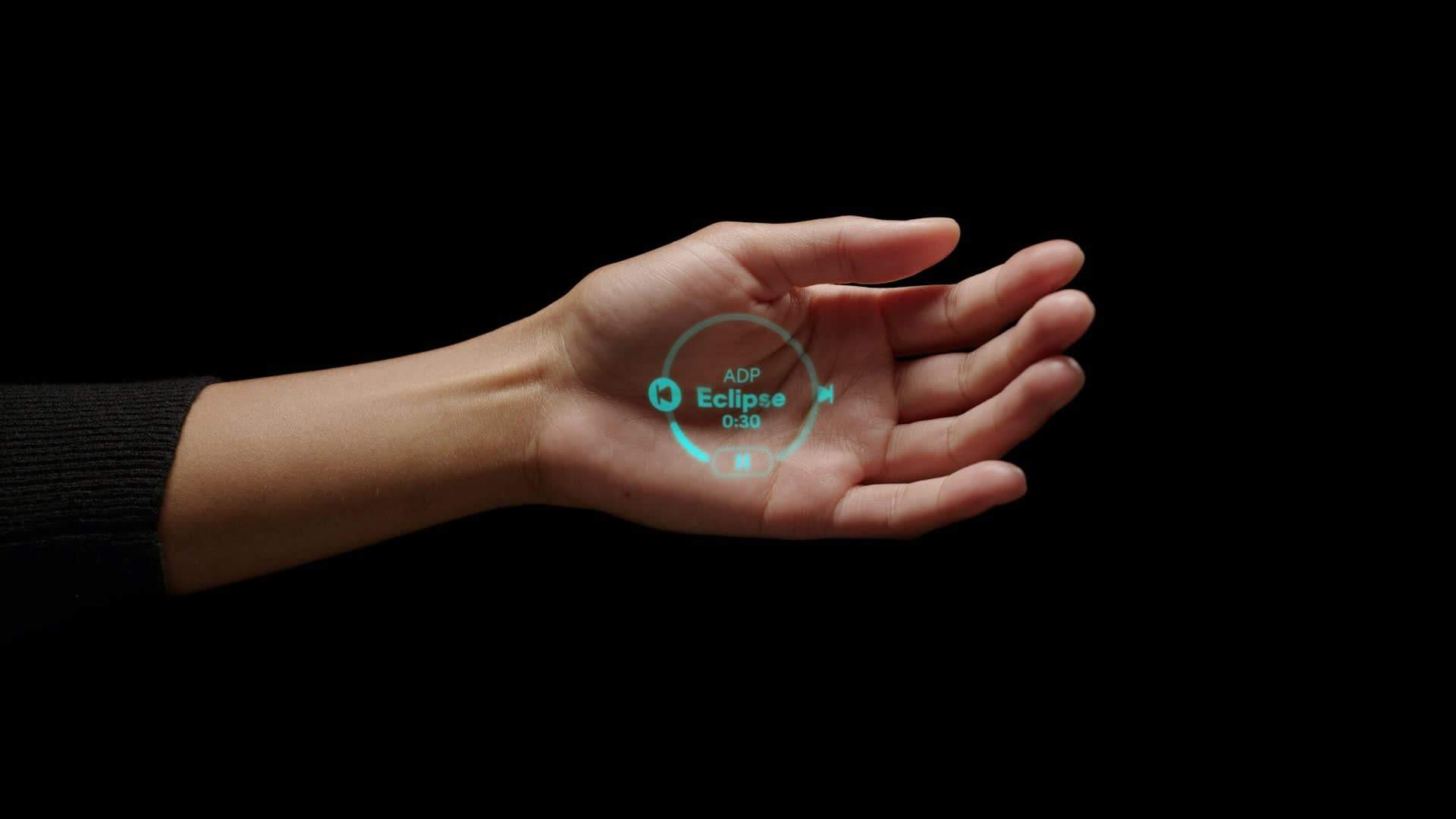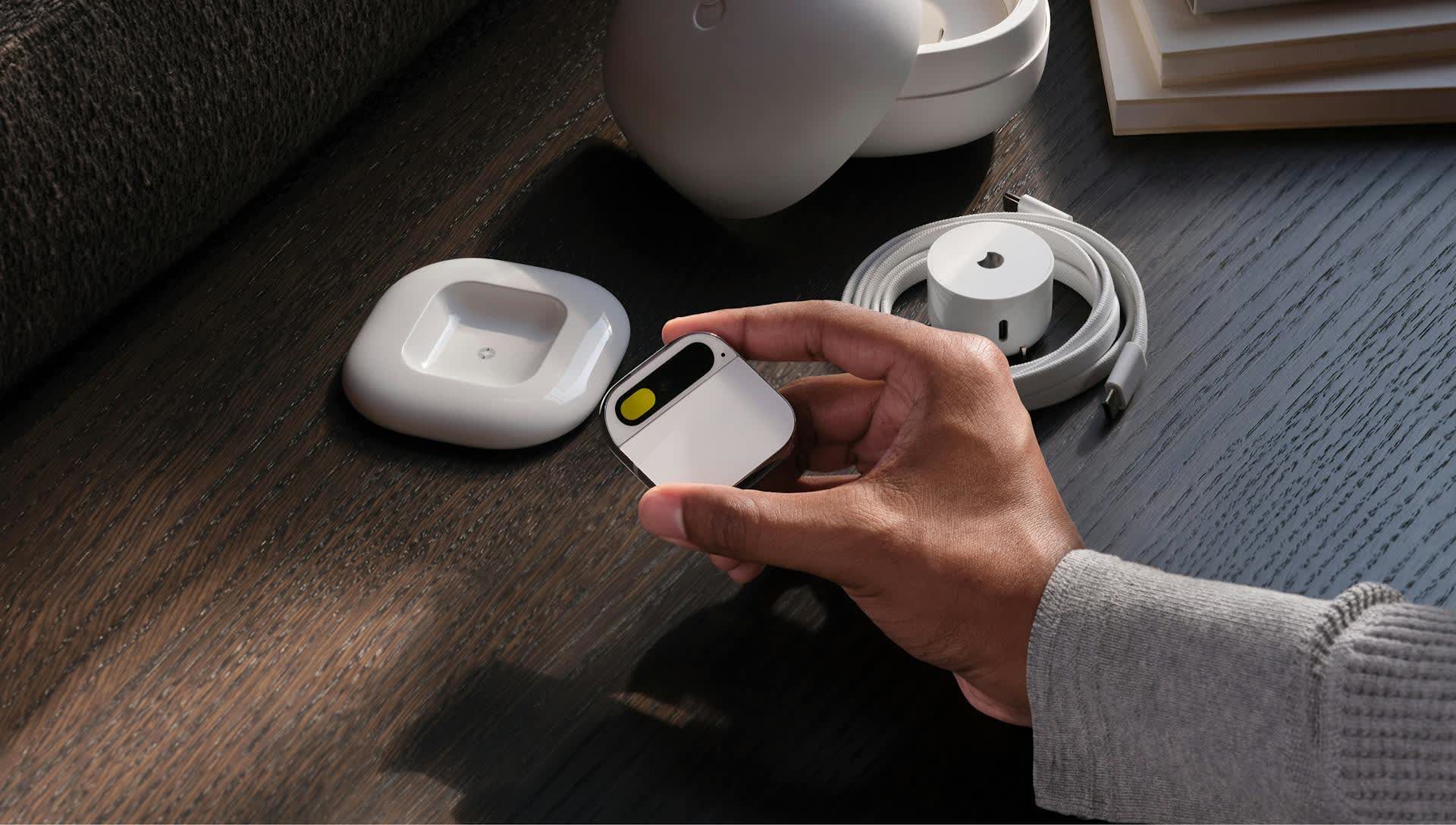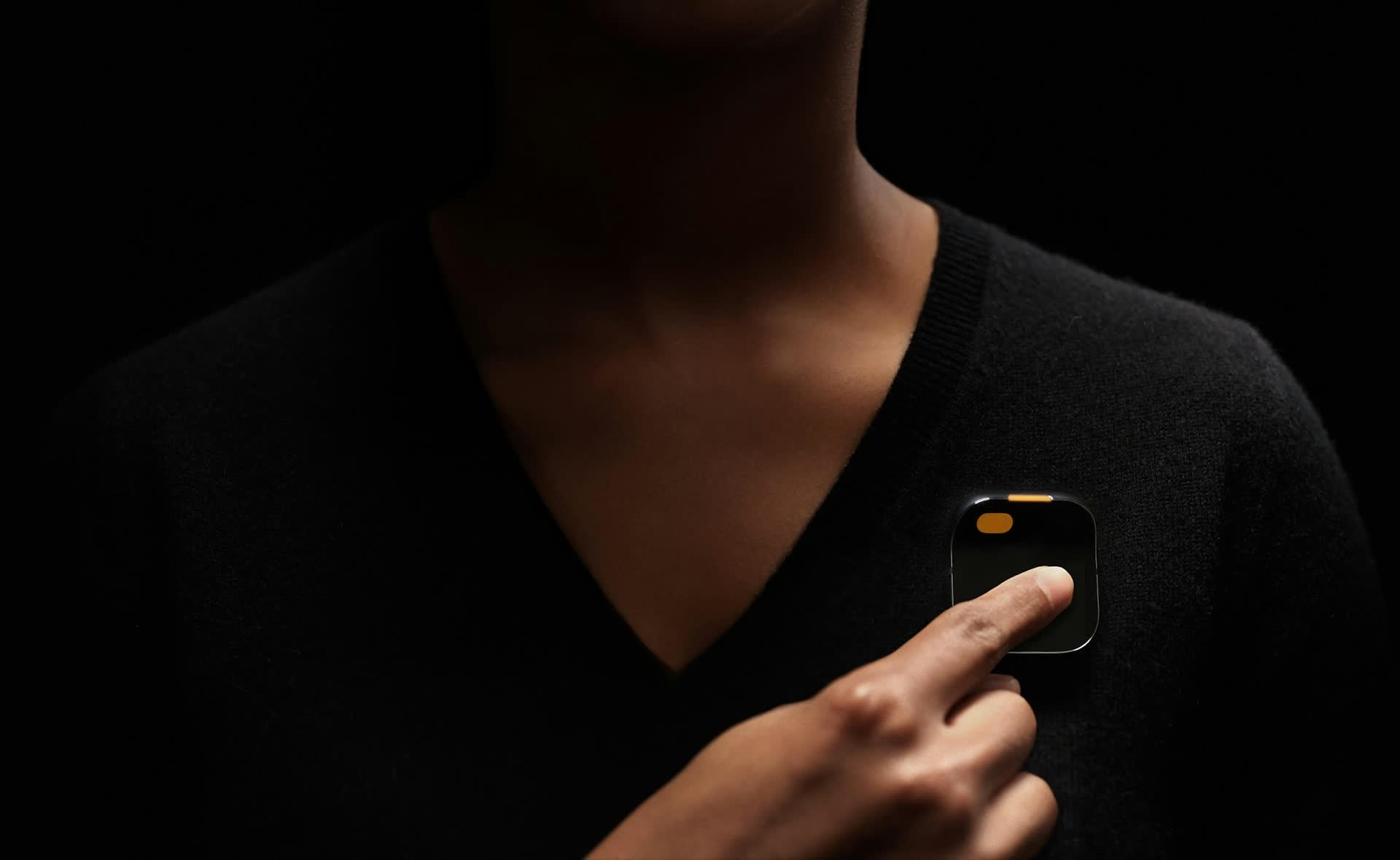In context: Humane unveiled a small AI-driven device in 2023 that it hoped would replace cellphones or become a better alternative in certain situations. It's a bit like a badge communicator from Star Trek with a futuristic laser-projected display. At the time, it was a prototype without a name or a release date, even though it had been in the works since 2018.
Humane corrected that shortfall earlier this month at SXSW in Austin, Texas, by revealing more details, including a name, new form factor, release date, and price. Unfortunately, it doesn't appear that it will lead to the revolution in communications the designers were hoping for, but that doesn't make it any less cool for what it does.
The unimaginatively named Ai Pin is about the size and shape of an iPhone 15 camera array. It is square with rounded corners, with the top edge angled slightly forward. It is hard to tell how it compares to the prototype because Humane redesigned it to wear like a lapel pin. The prototype was woven into a jacket for demonstration and only showed the sensor array. The final version clips on with a magnetic back that also functions as a hot-swappable battery booster.

The Ai Pin has a SIM card and cellular connectivity, so users can make calls and send and receive text messages over a wireless phone plan. It can also play music and serve as a virtual assistant. The crucial difference is that it does not have a screen.
Users mainly operate the Ai Pin via voice commands. The onboard AI handles almost any request. like "Call my mom" or "Play [song]." For rare instances where an interface is needed, the sensor array contains a laser that projects a simplified GUI on the palm. It also has a camera so it can identify objects, gestures, and written text.
It's important to note that the device interfaces have a minimal design to limit the need to display them for long periods because the laser would overheat. So, in alignment with the device's intended usage, users will only need to see an interface for a few seconds for a given task.
The Ai Pin also responds to touch and hand gestures. For example, swiping up or down on the Ai Pin controls volume. Hand gestures pull up an interface for the currently used cloud app, which is controlled with hand tilts and pinches. Most other functions use voice commands interpreted by AI.
The AI works somewhat like a combination of a virtual assistant and ChatGPT; that is, you can ask it to perform device-related tasks or answer a question. Even though OpenAI CEO Sam Altman is a backer of the technology, AI Pin uses a custom Humane-designed large-action model closer to Rabbit R1 than GPT-4.
The AI is context-aware, so it can text with a specific tone (e.g., urgent, happy, excited, or even "make it sound Gen Z"). It can also translate over 50 languages in real time. The Ai Pin can "hear" or "see" spoken or written languages via its built-in microphone and camera. Likewise, it can output translations vocally or visually via its internal speaker or laser display.

Overall, it's a pretty cool piece of tech, but it won't replace your current smartphone. There is too much that it cannot do. It still fells like a proof-of-concept or a phone accessory. Maybe with another five or 10 years of development it could challenge smart phones. As it is, average consumers are going to want more for its high MSRP.
Still, it has a demographic of early adopters. If you are one of those living on the bleeding edge, the basic matte black version is up for pre-order for $699. The white and black polished chrome variants are $100 more on Humane's web store. Although the website says devices start shipping in March, Humane confirmed a launch date of April 11 for "priority orders." Pre-orders starting today will arrive in early May.
